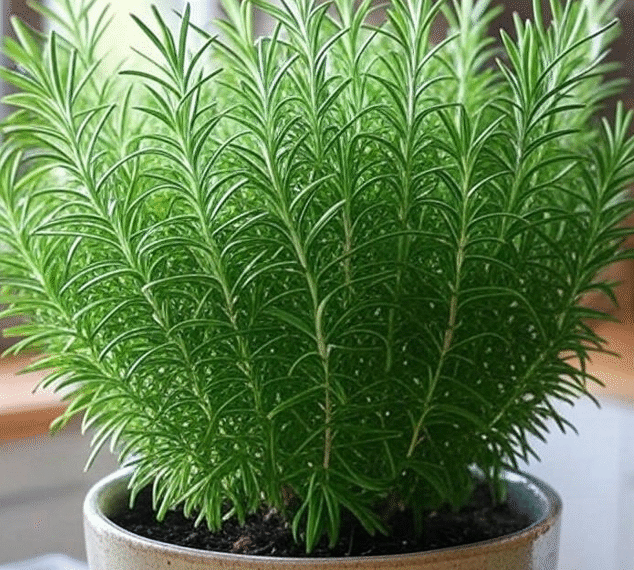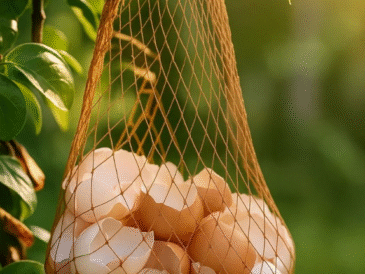Rosemary, with its fragrant needles and kitchen appeal, is a favorite in home gardens. But let’s be honest—keeping it alive can be surprisingly difficult. One minute it’s thriving, the next it’s browning, shriveling, or just giving up entirely. Sound familiar?
Don’t worry—you’re not alone. Most rosemary fails stem from just a few simple mistakes. Fortunately, once you understand this herb’s natural preferences, saving your plant is easier than you think. Let’s dig into the most common pitfalls and the easiest hack to rescue your rosemary and help it thrive.
1. Understand Rosemary’s Roots—Literally
Rosemary hails from the dry, rocky slopes of the Mediterranean. That means it’s used to:
- Full, blazing sun
- Sandy, fast-draining soil
- Low humidity and minimal rain
To mimic those conditions at home, give your rosemary at least 6–8 hours of direct sunlight daily and use gritty, well-draining soil. Forget rich, moisture-retaining mixes—this plant wants things lean and airy.
2. Drainage Is Everything
If your rosemary sits in soggy soil, it won’t be around long. Root rot is its number one killer.
Quick Fix: Use a pot with drainage holes and a soil mix that includes sand, perlite, or gravel. Raised beds or sloped areas are best for in-ground planting.
3. Stop Overwatering!
Watering rosemary like a tropical plant is a recipe for disaster. It hates wet feet. Let the top inch of soil dry out before watering. In cooler months, water even less—sometimes every 10–14 days is enough.
Tip: Stick your finger into the soil. If it’s still damp an inch down, skip the watering can.
4. Give It the Light It Craves
Rosemary is a total sun worshipper. Indoors, place it in a south-facing window or use a grow light. Outdoors, full sun is a must. Without enough light, it gets spindly and weak.
5. Soil Type Can Make or Break Your Plant
Forget standard garden soil—it’s too heavy. Instead, use a cactus or succulent mix, or create your own blend with:
- 1 part potting soil
- 1 part coarse sand
- 1 part perlite or pumice
This prevents compaction and encourages strong, healthy roots.
6. Watch Out for Pests and Diseases
Rosemary is fairly pest-resistant, but it’s not invincible. Keep an eye out for:
- Aphids
- Spider mites
- Whiteflies
- Powdery mildew (especially indoors)
Neem oil or insecticidal soap works well for pests. For fungal issues, improve air circulation and avoid overhead watering.
7. Temperature Matters
Rosemary likes things warm—ideally between 60°F and 80°F (15–27°C). It can’t handle frost. If you live in a cold region, bring it inside before temps dip below 40°F (4°C).
8. The Simplest Hack: Terracotta Pots
Here’s the game-changer: terracotta pots. They’re porous, allowing moisture to evaporate from the sides—perfect for rosemary’s dryness-loving roots. Combine with well-draining soil and you’re golden.
9. Prune for Shape, Health, and Longevity
Don’t let your rosemary get woody and wild. Prune regularly, especially in spring, to:
- Encourage bushy growth
- Improve air flow
- Keep the plant manageable
Avoid cutting into thick, woody stems—snip the soft green tips instead.
10. Try Companion Planting
Rosemary is a team player. Plant it near carrots, beans, or cabbage to:
- Repel pests like carrot flies and cabbage moths
- Improve garden biodiversity
Plus, its scent helps mask nearby plants from bugs.
11. How to Revive a Dying Rosemary Plant
If your rosemary is looking rough:
- Check soil moisture—too wet? Let it dry out.
- Move it into better light.
- Trim off dead stems.
- Repot into fresh, sandy soil and a terracotta pot.
- Be patient. With the right care, it often bounces back!
Final Thoughts
Growing rosemary doesn’t have to be frustrating. In fact, once you understand its Mediterranean roots, it’s one of the easiest, most rewarding herbs to keep around. Remember: less water, more sun, and a terracotta pot go a long way.
Still struggling? Try these tips—and let this be the last rosemary plant you ever let down!




